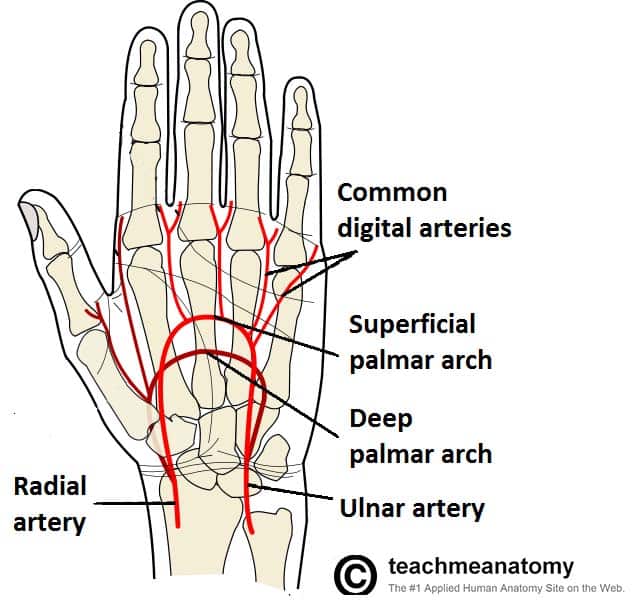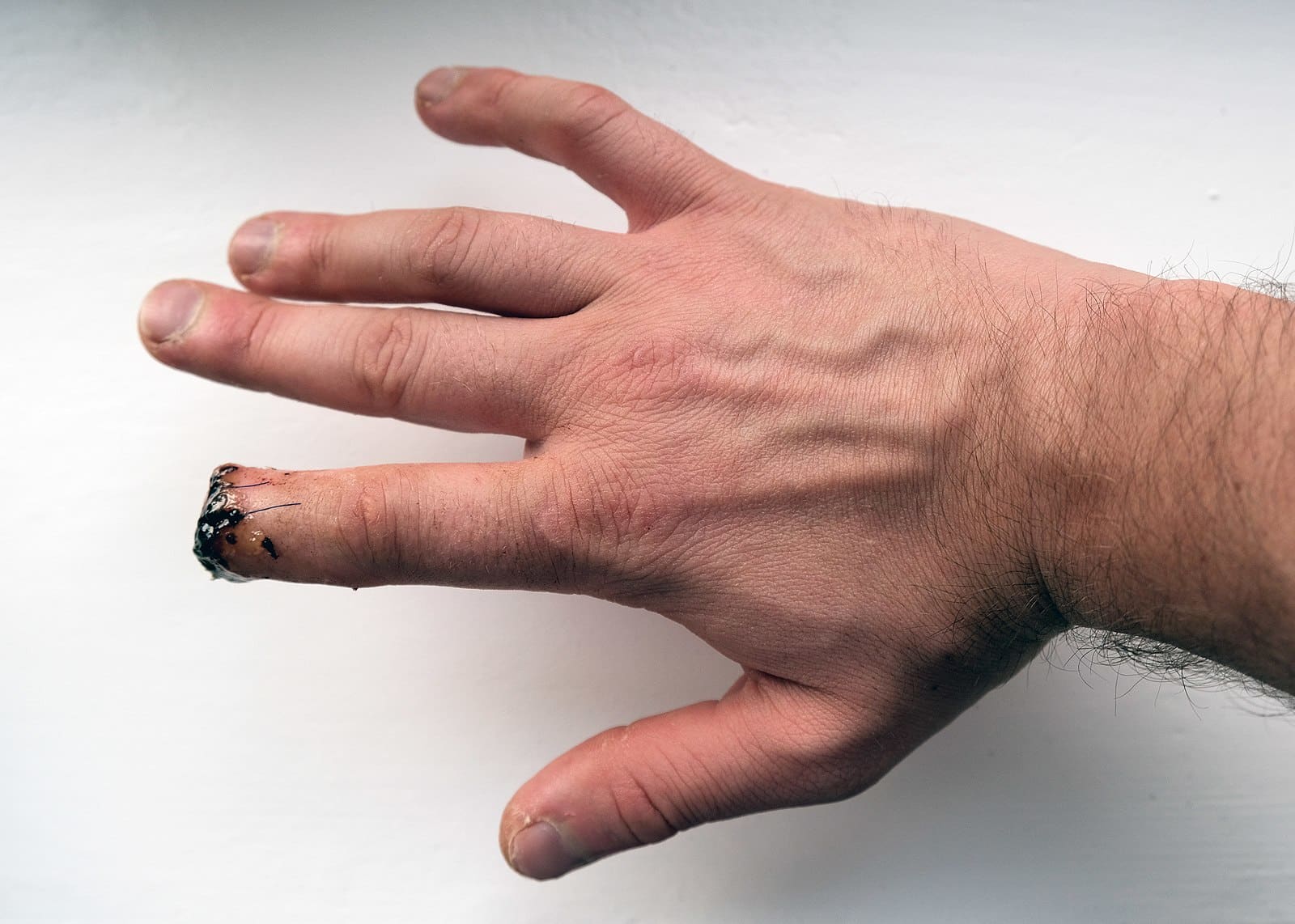Introduction
Finger replantation is the reattachment and reconstruction of an amputated portion of a digit. It aims to restore the amputated part to its anatomical site, preserving form and function. Most upper extremity amputations occur secondary to trauma.
Upon complete amputation, the amputated part is without blood supply and starts to become ischaemic. Depending on preservation of this part, ischaemic tolerance times can vary from 12 hours if warm or to 24 hours if cold.
Digital amputations generally have longer ischaemic tolerance times than proximal limb amputations because they have less muscle (which undergoes irreversible damage after 6 hours).
Blood Supply to the Digits
The arterial supply to the digits is via the digital arteries. Each digit is supplied by two digital arteries, which are located either side of the flexor sheath on the volar aspect (within a neurovascular bundle). The digital arteries arise from a common digital artery, which in turn arises from the superficial palmar arch.
The digital veins are typically located on the dorsal aspect of the digit and are more variable in location and size. In a complete amputation, both arterial and venous supply will need to be repaired for a successful replant.
Clinical Features
For any patient presenting with an amputated digit, the important aspects of the history to ascertain include:
- Mechanism and time of injury
- Number of digits involved
- Preservation of the amputated part
Ensure to also clarify any relevant past medical history and social history, including hand dominance and occupation.
On examination, it is important to assess both the hand and the amputated part. Examine the level of the amputation, the quality of the soft tissues remaining, and any evidence of wound contamination.
Investigations
All patients presenting with an amputated digit should have routine blood tests performed, include FBC, U&Es, clotting screen, and a Group and Save.
Plain film radiographs should be performed (anteroposterior, lateral, and oblique views) of both the amputated part and the stump to assess the level of amputation and aid in pre-operative planning.
Management
Optimal management of an amputated digit relies on effective preservation of the amputated part and swift transportation to hospital for specialist review and replantation.
As with any patient presenting with trauma, ensure a full A to E approach is taken for these patients. Whilst the amputated digit may appear the priority, a full secondary survey is also essential to ensure concurrent injuries are not missed.
All patients should receive appropriate tetanus prophylaxis and prophylactic antibiotics started, and ensure adequate analgesia is prescribed. Any amputated digit should be appropriately preserved, by wrapping and covering in saline-soaked gauze, then in a towel, before being placed in a sealed dry plastic bag (labelled with the patient’s details) and put on ice.
Definitive Management
Finger replantation is a complex operation. Patients must be fully informed about the commitment to rehabilitation, the risk of complications and incomplete return of function, and the possibility of multiple surgeries for best results. Post-operatively, patients must avoid smoking and all should be referred for hand therapy.
Indications for Finger Replantation
Indications for finger replantation consideration includes:
- Thumb at any level – the thumb provides 40-50% of hand function
- Multiple digits – preference to prioritise thumb and middle finger in order to achieve pinch grip
- Mid-palmar amputation
- Single digit distal to FDS insertion (Flexor Zone 1)
- Any amputation in a child
Contraindications for performing the procedure includes those with a mangled or severe crush injury, any segmental amputated, or prolonged ischaemic time (>24hrs).
There are many different surgical approaches to replantation, however the general procedural steps are:
(1) Debridement and tagging of structures
(2) Bone fixation +/- shortening, typically with k-wire fixation
(3) Repair of volar structures, mainly flexor tendon, digital nerves, and digital arteries
(4) Repair of dorsal structures, mainly extensor tendons, and digital veins
For some patients, especially those who cannot take prolonged periods off work, terminalisation of the affected digit (Fig. 2) may be preferable, so it is important to discuss options.
Complications
The main complication to consideration in finger replantation is replantation failure, most commonly due to either arterial thrombosis or venous insufficiency. Other complications that can occur include infection, stiffness, altered sensation, or bone malunion.
Key Points
- Finger replantation is the reattachment and reconstruction of an amputated portion of a digit
- Ensure to clarify mechanism and time of injury, number of digits involved, and preservation of the amputated part
- Always perform a secondary survey with any patient presenting with amputated finger
- Swift transportation to hospital following finger amputation is key to ensure optimal outcomes


